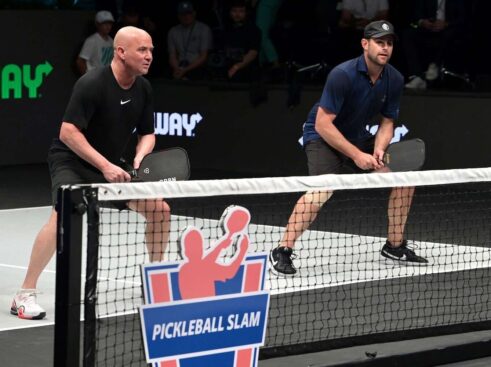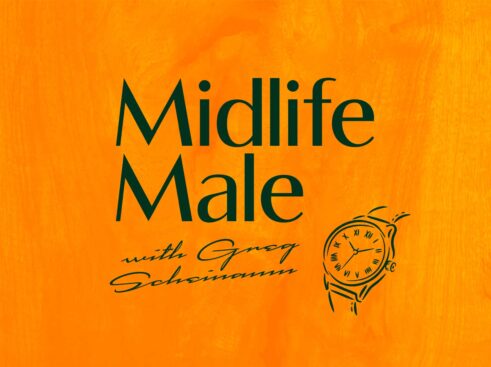Ambition is often portrayed as relentless drive: the pursuit of grand achievements, the accumulation of wealth and power, and a ceaseless climb up the career ladder. The ambitious are celebrated for their grit and determination, their ability to outwork and outlast everyone else. But what if ambition doesn’t have to look like this? What if the most ambitious thing one can do is to seek a life of harmony, leisure, and intention? What if ambition is not about endless toil but about putting yourself in a position where you no longer have to work so hard?
Redefining Ambition
At its core, ambition is the desire to achieve something meaningful, to create a life that reflects personal values and aspirations. In our modern, hyper-productive society, we often equate ambition with external markers of success: career accolades, financial milestones, non-stop hustle. Yet, there’s a growing recognition that true ambition isn’t always about more—more money, more recognition, more work. Sometimes, the most ambitious goal is to do less, but with more focus, clarity, and presence.
Wanting to retire, work less, or enjoy life more isn’t the absence of ambition. It’s the acknowledgment that ambition, like life, evolves. It is a shift in priorities, an understanding that the energy we expend is finite. The most ambitious may not be those who hustle endlessly, but those who know when to stop.
The Myth of Perpetual Hustle as Ambition
We live in a culture that idolizes the grind. The idea that to be successful you have to hustle 24/7 is pervasive. But is it really ambitious to live in a way that sacrifices health, relationships, and happiness for success? If ambition is about achieving personal fulfillment, then surely that must include the freedom to enjoy the life you’ve worked for.
Wanting to slow down, manage your workflow, and retire early is not a lack of ambition—it’s a strategic recalibration. It’s ambitious to create a life where you are free from constant striving, where you’ve worked hard enough to reach a point where you no longer have to work so hard. To engineer your life in such a way that you have time to think, reflect, and enjoy the present moment is a monumental achievement in a world that demands constant motion.
In short, to be happy.
The Ambition to Be Present
True ambition should not be measured by how fast you can run but by whether you know when to slow down and stop running. The drive to simplify life, to do less but with more focus, is perhaps the highest form of ambition. It requires self-awareness, discipline, and the courage to step off the treadmill when everyone else is still running.
This type of ambition is about intentional living. It’s about cutting out the noise, focusing on what truly matters, and creating a life that is aligned with your values rather than society’s expectations. It’s about recognizing that the highest aspiration isn’t necessarily doing more but doing what you choose to do exceptionally well.
Ambition and Freedom
If the ultimate goal of ambition is freedom, then the desire to work less is equally ambitious. We work hard to attain freedom—freedom from financial stress, time constraints, and freedom to live on our own terms. The drive to retire or work less is not about escaping ambition but about achieving its ultimate end.
Ambition doesn’t have to mean working until the end of your days. It can mean putting yourself in a position where work is a choice, not a necessity. The ambition to slow down, to be present for your family, passions, and yourself, is an ambition to reclaim your life. In many ways, it’s the purest form of ambition: not dictated by others, but defined on your own terms.
Evolving Ambition
I’ve seen the narratives we’ve built around ambition, and for most of my life, I bought in. We often refer to ambitious men as beasts—hustling, grinding, with an “all gas, no brakes” mentality. We wear our endless work hours and postponed vacations as badges of honor. It’s as if being unavailable, buried in tasks, and locked in urgency makes us more masculine. But now, in my 50s, I don’t see that as a true measure of success.
We live in a culture where being “on” all the time is admired. But what are we proving? That we can survive the grind? That we can tolerate more stress than the next guy? Life is hard enough without adding extra weight. And here’s the truth: We’re not getting any younger. Why do we keep striving to show the world how tough we are when all it leaves us with is burnout?
The Ambition to Live on Your Terms
True ambition, at least for me, is about creating a life where I don’t have to hustle just to prove I can. It’s about working hard enough to put myself in a position where I no longer have to work so hard. Isn’t that the real goal—to get to a point where life is lived on your terms? To have the freedom to choose how you spend your time, to say no to the things that drain you and yes to the things that energize you?
As we age, the metrics of success change. The ambition is no longer about how much you can grind but about how effectively you can live. It’s not about what you accumulate but about what you can enjoy. The ambition to live intentionally, with less noise and more focus, isn’t a retreat from success. It’s an evolution of it.
The Ambition of Happiness
We live in a world where ambition is synonymous with achievement. But no one talks about happiness as ambition. Somehow, happiness doesn’t get the same respect as hustle. We’re taught to chase titles, money, and milestones, but rarely are we encouraged to pursue happiness with the same fervor.
Yet, happiness is perhaps the most radical form of ambition. It’s not passive or lazy. In fact, it requires intention, self-awareness, and sometimes going against what society expects. It’s easy to chase external markers of success because they’re tangible. But happiness? That’s an internal game.
Ambition Requires Discipline
Happiness isn’t something that just happens. It requires the same level of discipline and effort that we usually reserve for careers, fitness, or financial success. You have to choose happiness, work for it, and protect it.
There’s ambition in building a life that prioritizes contentment, in creating a routine that leaves space for joy, in spending time with people who uplift you, and in doing work that nourishes rather than depletes you. It’s a conscious decision to say, “I am worthy of living a life that feels good to me,” even when that’s not what the world values most.
The Unspoken Truth of Midlife Ambition
At midlife, the ambition to be happy becomes more relevant. Time is finite, and we realize we’ve spent much of our lives chasing goals, pushing ourselves, and proving ourselves. But for what? More often than not, we’ve been chasing someone else’s idea of success.
Happiness isn’t going to arrive once we hit the next milestone. It’s not waiting at the end of the grind. The ambition nobody talks about—the ambition to be happy—becomes the most important one. It’s about taking stock of what truly brings us fulfillment and shifting our focus there.
In Health,
Greg
Greg Scheinman is the Founder of Midlife Male. His mission is to help men maximize middle age. He does this through one-on-one coaching, a podcast, and a newsletter. He is a best-selling author, speaker, entrepreneur with two successful exits, athlete and thought leader on life over 40. Most importantly, he’s a husband and father.







